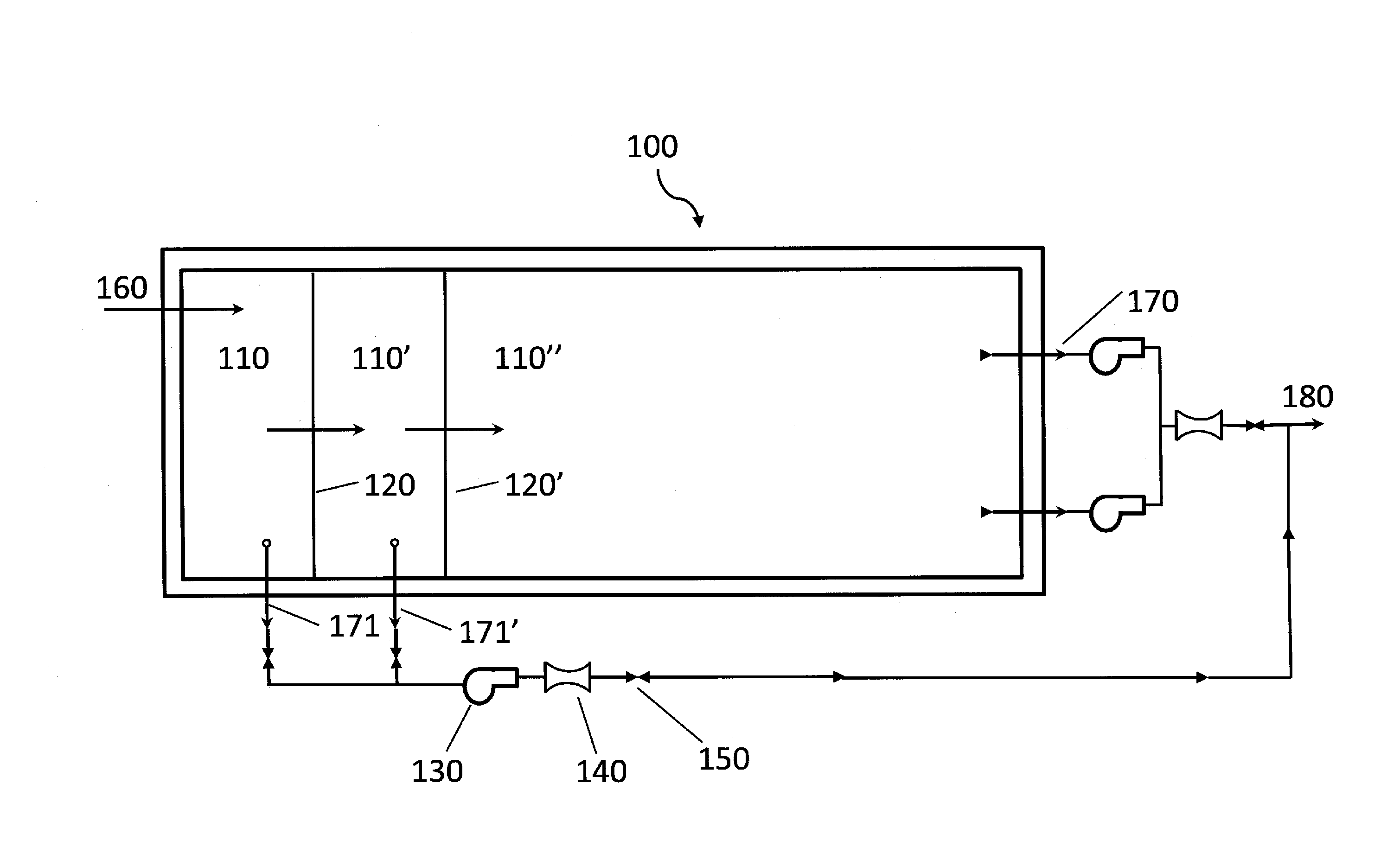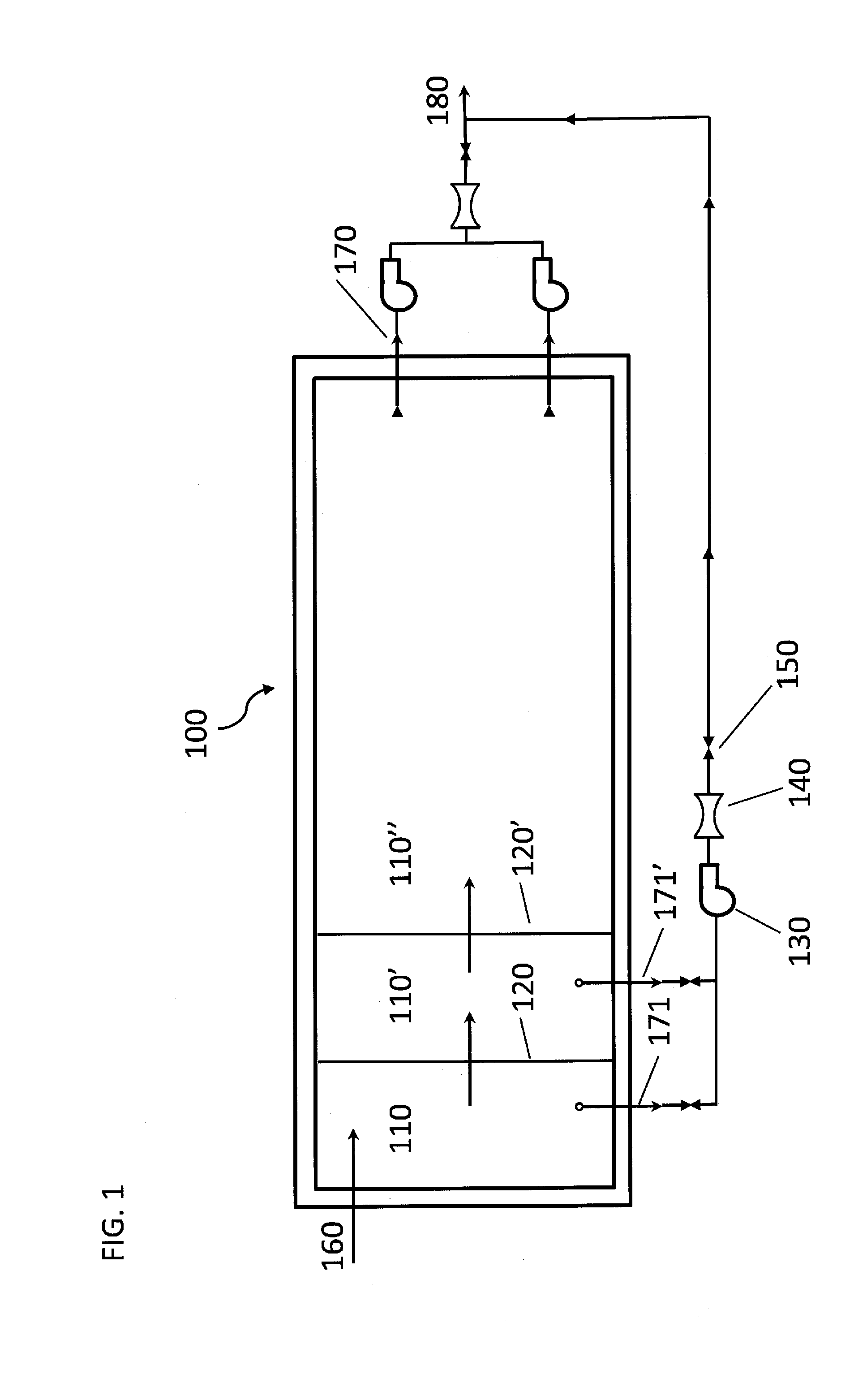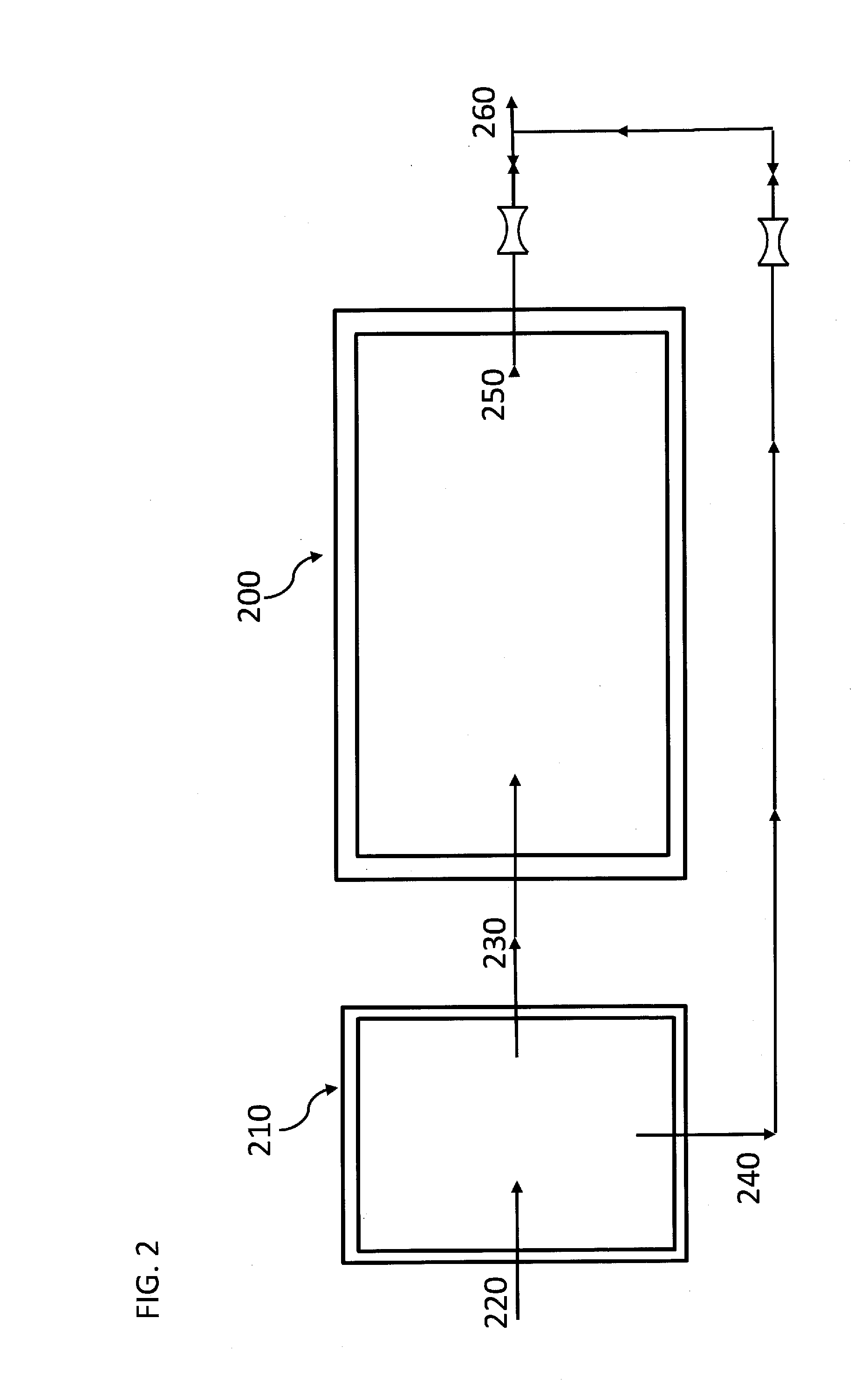Anaerobic lagoon or tank design for eflluent carbon to nitrogen ratio control
a technology of carbon to nitrogen and anaerobic lagoons, applied in the direction of filtration separation, multi-stage water/sewage treatment, separation processes, etc., can solve the problems of low bod/tkn ratio of al effluent, short circuit design or partial bypass design, etc., to achieve more accurate control of al bod/tkn ratio, bod concentration and bod/tkn ratio, the effect of increasing the concentration
- Summary
- Abstract
- Description
- Claims
- Application Information
AI Technical Summary
Benefits of technology
Problems solved by technology
Method used
Image
Examples
example 1
[0056]In the first Example, wastewater having the following initial pollutant concentrations of 2,000 mg / L BOD, 600 mg / L FOG, 1,500 mg / L TSS, 140 mg / L TKN, and 17 mg / L total phosphorous (TP), which is conducted into a first wastewater treatment zone, will typically undergo 20 to 30% reduction in BOD concentration. Thus, alongside a 30% BOD reduction to 1,400 mg / L, the other pollutants are reduced to approximately 200 mg / L or less FOG, 300 to 400 mg / L TSS, 140 mg / L TKN, and 17 mg / L TP. A certain volume of wastewater can then be discharged out of the first wastewater treatment zone and blended with wastewater discharged from the outlet end of the final wastewater treatment zone to produce a blended wastewater or mixture with adequately high C / N and C / P ratios for a downstream activated sludge treatment process to achieve excellent enhanced biological phosphorous removal and nitrogen removal by nitrification-denitrification.
[0057]A BOD / N (C / N) ratio of at least 4 / 1 and a BOD / P (C / P) ra...
example 2
[0063]For wastewater having a higher initial BOD concentration of 2,500 mg / L and identical concentrations for TKN=140 mg / L and TP=17 mg / L and analogous process parameters, the relative amounts of effluent from the first wastewater treatment zone and the final wastewater treatment zone have to be adjusted as follows to maintain a C / N ratio of 4 / 1 and a C / P ratio of 20 / 1.
[0064]The BOD concentration in the effluent from the first wastewater treatment zone is reduced to 0.8(2,500 mg / L POD)=2,000 mg / L BOD and the effluent from the final wastewater treatment zone is reduced to 0.2(2,500 mg / L BOD)=500 mg / L BOD. Accordingly, the mixture prepared downstream of the anaerobic lagoon treatment system requires the following relative amounts of first and final effluents for a 900 mg / L BOD concentration: x(2,000 mg / L)+(1−x)(500 mg / L)=900 mg / L→x=4 / 15≈0.267.
[0065]Thus, approximately 26.7% of the total effluent flow volume must be taken from the first wastewater treatment zone and 100%−26.7%=73.3% mu...
PUM
| Property | Measurement | Unit |
|---|---|---|
| detention time | aaaaa | aaaaa |
| detention time | aaaaa | aaaaa |
| detention time | aaaaa | aaaaa |
Abstract
Description
Claims
Application Information
 Login to View More
Login to View More - R&D
- Intellectual Property
- Life Sciences
- Materials
- Tech Scout
- Unparalleled Data Quality
- Higher Quality Content
- 60% Fewer Hallucinations
Browse by: Latest US Patents, China's latest patents, Technical Efficacy Thesaurus, Application Domain, Technology Topic, Popular Technical Reports.
© 2025 PatSnap. All rights reserved.Legal|Privacy policy|Modern Slavery Act Transparency Statement|Sitemap|About US| Contact US: help@patsnap.com



